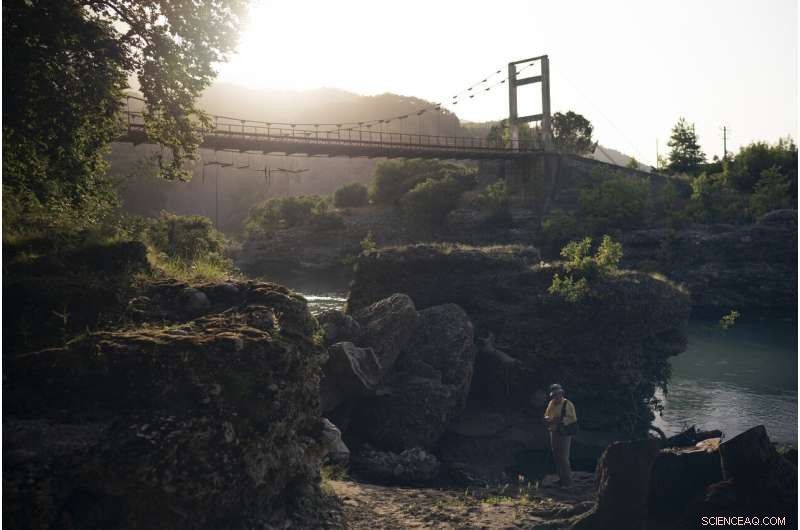
Neste 14 de junho, Foto 2019, Jorgji Ilia, 71, fica na margem do rio Vjosa após coletar água de uma pequena nascente na vila de Kanikol, Albânia. "Não há nada melhor do que o rio, "diz a professora aposentada." O Vjosa dá beleza à nossa aldeia. "(AP Photo / Felipe Dana)
Sob um grande plátano perto da fronteira da Albânia com a Grécia, Jorgji Ilia enche um frasco amassado de uma das muitas nascentes do rio Vjosa.
"Não há nada melhor do que o rio, "diz a professora aposentada." O Vjosa dá beleza à nossa aldeia. "
O Vjosa é temperamental e inconstante, mudando de azul cobalto translúcido para marrom sujo para verde esmeralda, de um fluxo constante a uma torrente violenta. Nada o detém por mais de 270 quilômetros (170 milhas) em seu curso através das encostas cobertas de floresta das montanhas Pindus da Grécia até a costa do Adriático da Albânia.
Este é um dos últimos rios selvagens da Europa. Mas por quanto tempo?
O governo da Albânia colocou em prática planos para barrar o Vjosa e seus afluentes para gerar eletricidade tão necessária para um dos países mais pobres da Europa, com a intenção de construir oito barragens ao longo do rio principal.
É parte de um boom hidrelétrico mundial, principalmente no sudeste da Ásia, América do Sul, África e partes menos desenvolvidas da Europa. Só nos Bálcãs, cerca de 2, 800 projetos para domar rios estão em andamento ou planejados - um "tsunami de barragem, "diz Olsi Nika da EcoAlbania, uma organização sem fins lucrativos que se opõe aos projetos.
Alguns consideram a energia hidrelétrica um sistema confiável, fonte de energia renovável e barata que ajuda a reduzir a dependência de combustíveis fósseis que aquecem o planeta, como o carvão, petróleo e gás natural. O Painel Intergovernamental sobre Mudanças Climáticas afirma que tem "potencial significativo" para reduzir ainda mais as emissões de carbono.
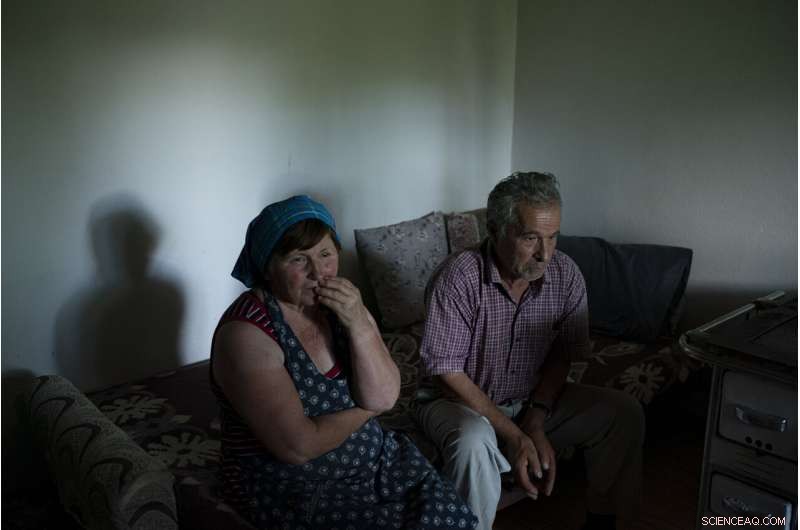
Neste 19 de junho, Foto 2019, Jorgji Ilia, 71, um professor aposentado, senta com sua esposa, Vito, 64, dentro de sua casa na aldeia de Kanikol, Albânia. "Não há nada melhor do que o rio, "diz ele." O Vjosa dá beleza à nossa aldeia. "(AP Photo / Felipe Dana)
Mas alguns estudos recentes questionam o valor da energia hidrelétrica na luta contra o aquecimento global. Críticos como a EcoAlbania dizem que os benefícios da energia hidrelétrica são exagerados - e superados pelos danos que as barragens podem causar.
Os rios são uma parte crucial do ciclo global da água. Eles agem como artérias da natureza, transportando energia e nutrientes por vastas paisagens, fornecer água para beber, produção e indústria de alimentos. Eles são um meio de transporte para pessoas e mercadorias, e um paraíso para velejadores e pescadores. Os rios são o lar de uma diversidade de peixes, incluindo minnows, truta e salmão - e fornecem abrigo e alimento para pássaros e mamíferos.
Mas as barragens interrompem seu fluxo, e a vida dentro e ao redor deles. Ao instalar escadas de peixes e alargar túneis para contornar barragens ajuda algumas espécies, não funcionou em lugares como a Amazônia, disse Julian Olden, um ecologista da Universidade de Washington que estudou os impactos das barragens no Brasil, Austrália e EUA
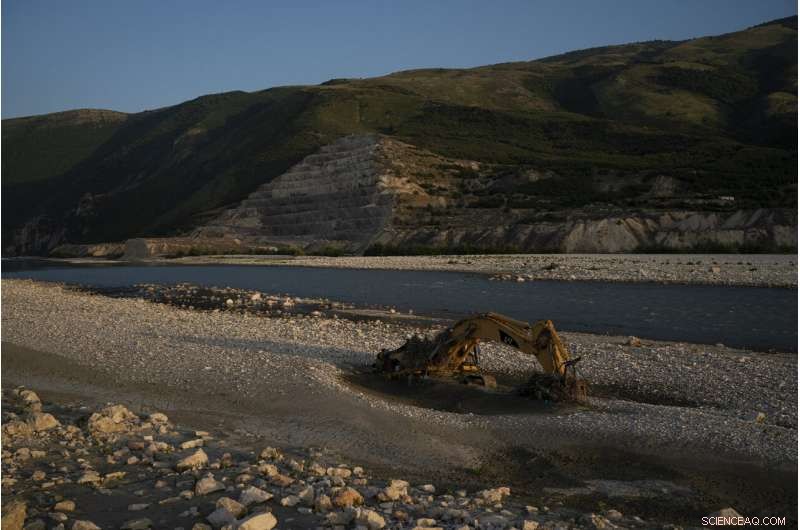
Neste 23 de junho, Foto 2019, uma escavadeira abandonada fica às margens do rio Vjosa, no local de construção da barragem de Kalivac, na Albânia. Alguns consideram a energia hidrelétrica um sistema confiável, fonte de energia renovável e barata que ajuda a reduzir a dependência de combustíveis fósseis que aquecem o planeta, como o carvão, petróleo e gás natural. Mas alguns críticos como a EcoAlbania dizem que os benefícios da energia hidrelétrica são exagerados - e superados pelos danos que as barragens podem causar. (AP Photo / Felipe Dana)
Barragens bloqueiam o fluxo natural de água e sedimentos, e pode causar oscilações de temperatura prejudiciais. Eles também podem alterar a química da água e causar o crescimento de algas tóxicas.
"Assim que as represas entrarem, quase não há volta, "Olden diz." Você deixa um rio de água morrer de fome. Não é surpreendente que seus habitantes provavelmente desapareçam. "
Aqueles que vivem ao longo da margem do rio ou dependem da hidrovia para sua subsistência temem que as represas possam matar os Vjosa como eles os conhecem. Seu frágil ecossistema será irreversivelmente alterado, e muitos residentes perderão suas terras e casas.
"É como os humanos, "diz Elton Pashollari, um guia de rafting cujos clientes são cada vez mais atraídos pela natureza selvagem do Vjosa. "O que acontece se uma de suas artérias, para, o sangue não circula mais? É a mesma coisa com o Vjosa. "
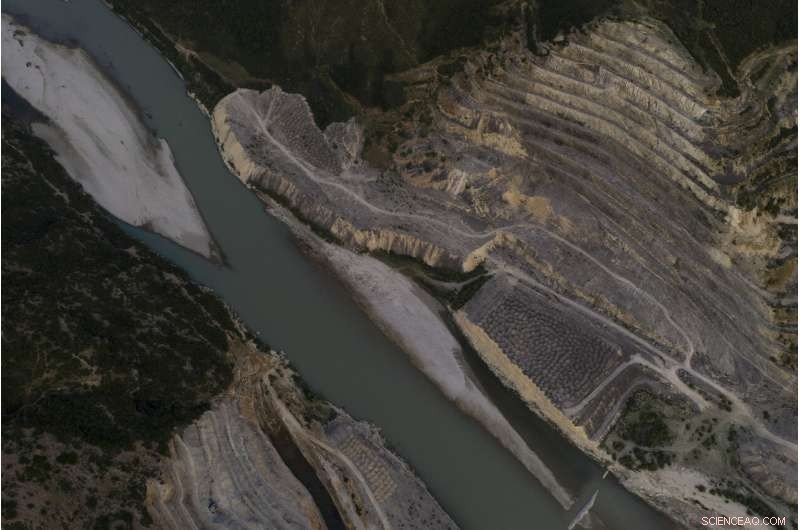
Em 23 de junho, Foto aérea de 2019 mostra o canteiro de obras da barragem Kalivac nas margens do rio Vjosa, na Albânia. À medida que a pressão para construir barragens se intensifica nos países menos desenvolvidos, o oposto está acontecendo nos EUA e na Europa Ocidental, onde há um movimento para derrubar barragens consideradas obsoletas e ambientalmente destrutivas. (AP Photo / Felipe Dana)
___
Do plátano de Ilia perto da fronteira com a Grécia, o Vjosa flui para o norte através de desfiladeiros estreitos antes de passar pela cidade de Tepelene, ficando mais lânguido e se expandindo em grandes bancos de cascalho, seu fluxo se divide em fios - o que os cientistas chamam de rio trançado.
Essa característica é típica de rios selvagens e é crítica para o ecossistema local. Ele cria diversos habitats e permite que os sedimentos fluam, fertilizando as várzeas e rejuvenescendo o leito do rio.
É aqui que o Vjosa revela um outro lado da sua natureza selvagem. After seasonal floods, the river can change course, its braids re-forming along the deep gravel that serves as a filter and self-purification system. It skips from left to right to the center, across an area around 1.5 kilometers (1 mile) wide.
"A natural river is a dynamic river ... a living river, " says Nika of EcoAlbania. "It's living day by day and it changes its face. After each flood, you could never see the same scenery."
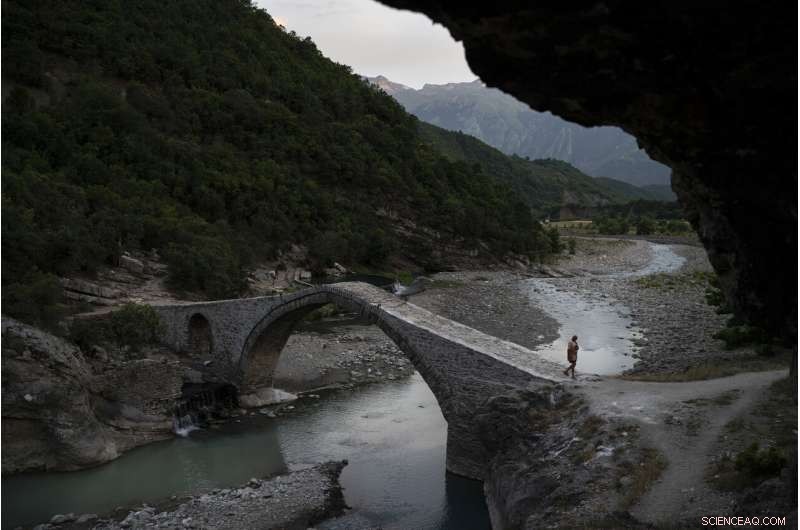
In this June 18, Foto 2019, a man crosses a bridge over the Langarica River, a tributary to the Vjosa near the city of Permet, Albania. Albania's government has set in motion plans to dam the Vjosa and its tributaries to generate much-needed electricity for one of Europe's poorest countries, with the intent to build eight dams along the main river. (AP Photo / Felipe Dana)
The river's ability to clean itself has proved crucial in a country where waste management is often rudimentary. Por anos, people have dumped trash in gullies that washed into the river, leaving trails of plastic and cloth clinging to tree branches. Some towns still dump raw sewage, but the river's self-cleansing means that the overall water quality is passable.
About 25 kilometers (16 miles) northwest of Tepelene, the riverbed narrows into another tight, steep gorge teeming with life, where birds swoop from trees anchored precariously in the cliff-face. Just beyond that comes the first sign of how dramatically a dam would affect the river and the life connected to it.
Emerging from the canyon, it looks like a strip mine. This is Kalivac, one of the proposed dam sites. An Italian company was awarded a contract in the late 1990s. Construction began, but never finished, plagued with delays and financial woes. It now lies derelict with guards stationed to prevent looting.
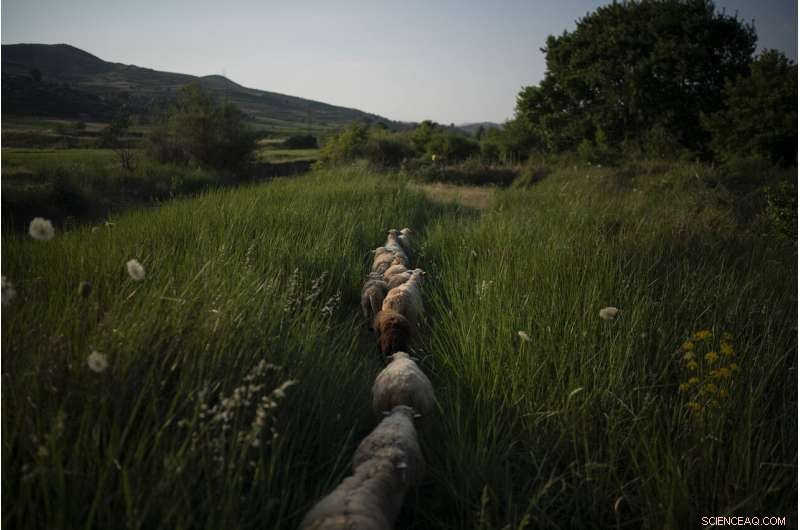
In this June 27, Foto 2019, sheep are pastured near the shore of the Vjosa River in Ane Vjosa, Albania. (AP Photo / Felipe Dana)
Half the hill on one side has been dug away, creating giant steps into the rock. Vehicles sit abandoned, a digging machine sunken into the ground, branches and debris clinging to its frame.
Agora, the government has awarded a new contract for the site to a Turkish company.
For Benedikt Baeumler, a German advertising executive kayaking the length of the river, the sight was a shock.
"I felt like there's all this wonderful nature, and then suddenly to see these stairs, like the Egyptian pyramids, " ele diz.
A few days earlier and several miles upriver, the 43-year-old had been ambivalent about the hydropower projects, noting his own country had also dammed its rivers.
But what he saw at the Kalivac site changed his mind.
"It was really unbelievable what they did to nature, removing entire parts of the mountain, " ele disse, setting up camp on a sandbar back in June. "I hope this dam is never built."

In this June 28, Foto 2019, Shyqyri Seiti, pulls his fishing net from the Vjosa River near Ane Vjose, Albania. The 65-year-old boatman has been transporting locals, goods and livestock across the river for about a quarter century. The construction of the Kalivac dam would spell disaster for him. Many of the fields and some of the houses in his nearby village of Ane Vjose would be lost. (AP Photo / Felipe Dana)
Many locals agree. Dozens of residents from the village of Kute, further downriver, joined nonprofits to file what was Albania's first environmental lawsuit against the construction of a dam in the Pocem gorge, a short distance downriver from Kalivac. They won in 2017, but the government has appealed.
The victory, while significant, was just one battle. Uma semana depois, the government issued the Kalivac contract. EcoAlbania plans to fight that project, também.
Ecologically, there is a lot at stake.
A 2018 study led by University of Vienna's Fritz Schiemer found the Vjosa was incredibly diverse. The team logged more than 90 types of aquatic invertebrates in the places where dams are planned, plus hundreds of fish, amphibian and reptile species, some endangered and others endemic to the Balkans.
But "the majority of the specific biodiversity will disappear in the case of the planned dam constructions, " they warned.
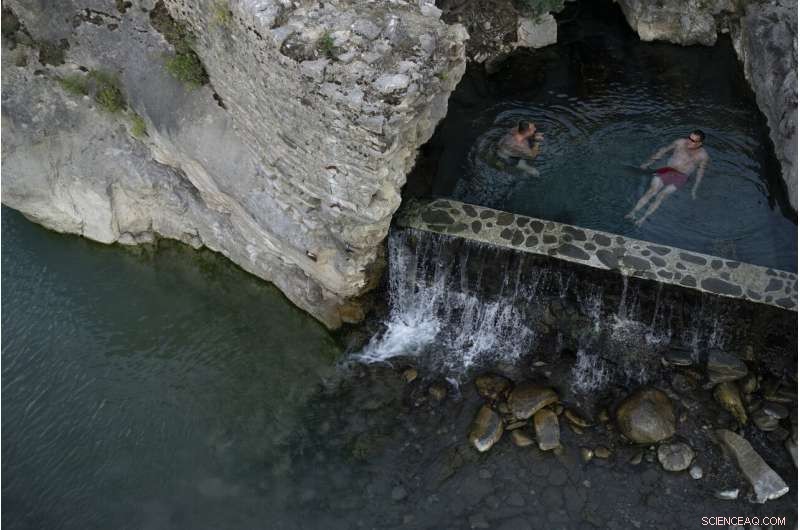
Neste dia 20 de junho, Foto 2019, people bathe in a thermal spring on the banks of the Langarica River, a tributary to the Vjosa near Permet, Albania. (AP Photo / Felipe Dana)
Dams can unravel food chains by reducing populations of insects that feed fish and by limiting spawning, which in turn leaves less prey for fish-eating birds and mammals. But the most well-known problem with building dams is that they block the paths of fish trying to migrate upstream to spawn. The U.S. Atlantic salmon population has plummeted, according to the National Oceanic and Atmospheric Administration, in great part due to dams.
As pressure to build dams intensifies in less developed countries, the opposite is happening in the U.S. and western Europe, where there's a movement to tear down dams considered obsolete and environmentally destructive.
More than 1, 600 have been dismantled in the U.S., most within the past 30 years, according to the advocacy group American Rivers. Na Europa, the largest-ever removal began this year in France, where two dams are being torn down on Normandy's Selune River.
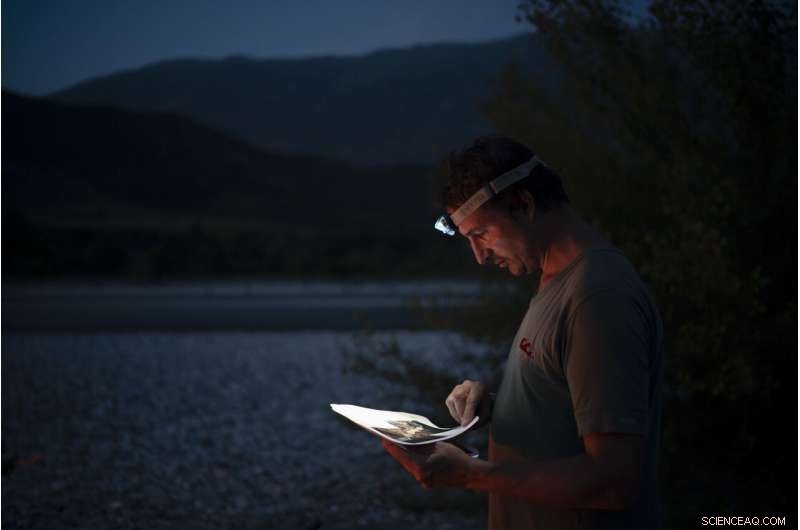
In this June 15, Foto 2019, Benedikt Baeumler, a German advertising executive kayaking the length of the Vjosa River, checks his map after setting up camp on its bank in Albania. A few days earlier and several miles upriver, the 43-year-old had been ambivalent about the hydropower projects, noting his own country had also dammed its rivers. But what he saw at the Kalivac site changed his mind. "It was really unbelievable what they did to nature, removing entire parts of the mountain, " he said. "I hope this dam is never built." (AP Photo/Felipe Dana)
___
With so few wild rivers left around the globe, the Vjosa also is a valuable resource for studying river behavior.
"Science is only at the beginning of understanding how biodiversity in river networks is structured and maintained, " says researcher Gabriel Singer of the Leibniz-Institute in Germany. "The Vjosa is a unique system."
For Shyqyri Seiti, it's much more personal.
The 65-year-old boatman has been transporting locals, goods and livestock across the river for about a quarter century. The construction of the Kalivac dam would spell disaster for him. Many of the fields and some of the houses in his nearby village of Ane Vjose would be lost.
"Para mim, the river is everything, " he says. "Someone will benefit from the construction of the dam, but it will flood everyone in the area. ... What if they were in our place, how would they feel to lose everything?"
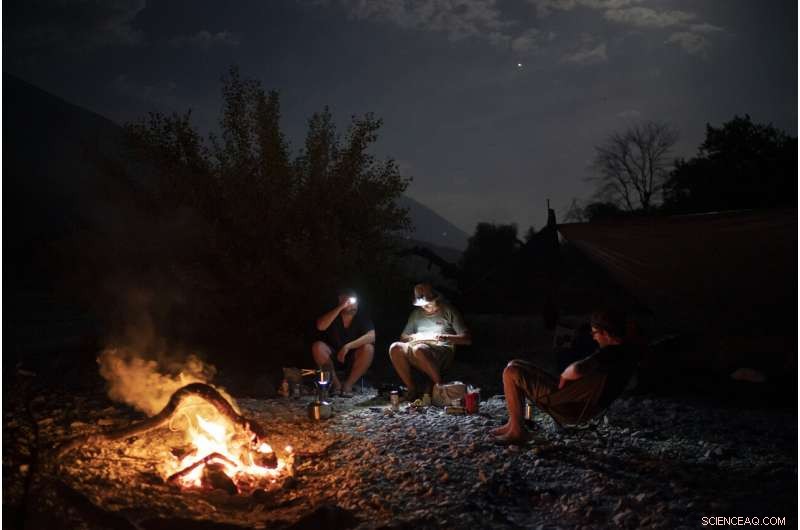
In this June 15, Foto 2019, Jurgen Steinbauer, Benedikt Baumler and Sebastian Baumler, German tourists who are kayaking the length of the Vjosa River, cook a meal as they sit next to a bonfire on the river bank in Albania. After seeing the Kalivac dam construction site, Benedikt Baeumler said, "It was really unbelievable what they did to nature, removing entire parts of the mountain. I hope this dam is never built." (AP Photo/Felipe Dana)
His love for the river runs deep:It feeds his family by providing work and fish to eat and sell. He taught his five children to swim here. Every morning, he runs down to the river just to take in the view.
Seiti has protested against the plans, but some of his neighbors disagree. The mayor, Metat Shehu, insists the community "has no interest" in the matter.
"The Vjosa is polluted. The plants and creatures of Vjosa have vanished, " Shehu says while tending his goats. The biggest issue, he adds, is that villagers are being offered too little to give up their land. He hopes the dam will bring investment to the area.
About 10 kilometers (6 miles) downriver of Ane Vjose lies the village of Kute, on a hill overlooking the Vjosa as it snakes its way north to the sea. Kute residents joined the lawsuit against the Pocem dam that would flood their fields, some houses and, crucially for many, a cemetery. Relieved by their victory, they now wait anxiously for the outcome of the government's appeal.
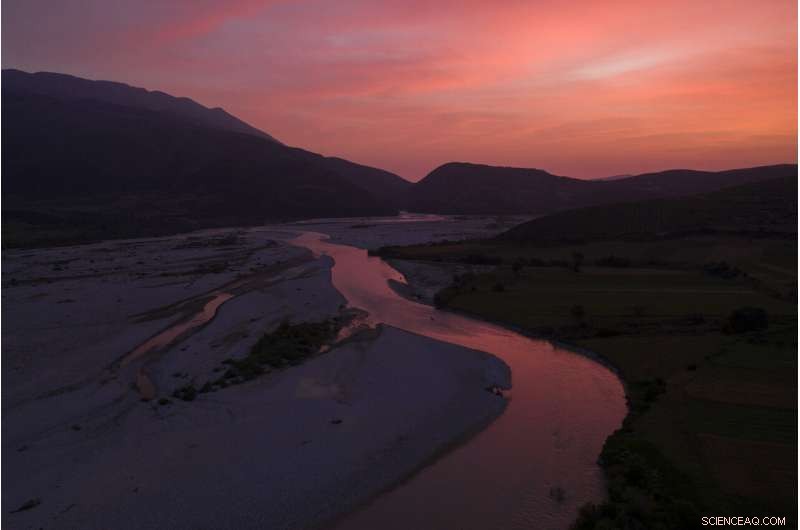
Neste domingo, June 16, 2019 aerial photo, the sun sets behind the Vjosa River near Tepelene, Albania. Rivers are a crucial part of the global water cycle. They act like nature's arteries, carrying energy and nutrients across vast landscapes, providing water for drinking, food production and industry. (AP Photo / Felipe Dana)
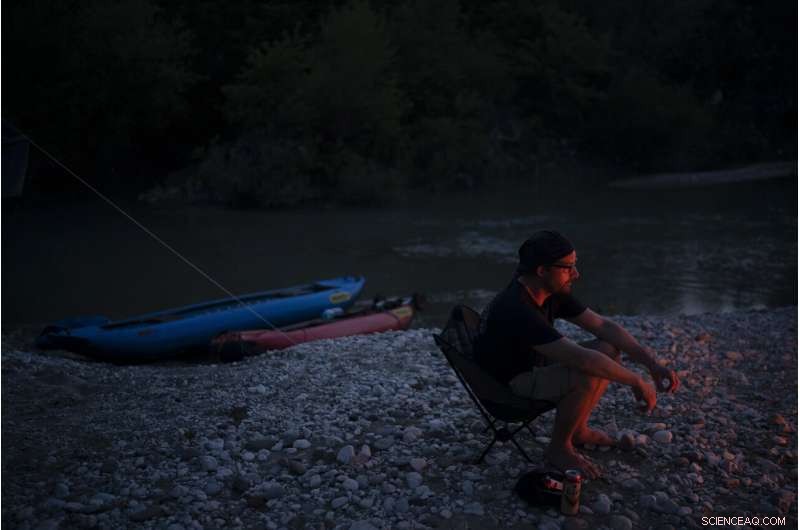
In this June 15, Foto 2019, Sebastian Bäumler, 41, a German filmmaker kayaking the length of the Vjosa River, is illuminated by a bonfire as he sits next to his kayak on its bank in Albania. (AP Photo / Felipe Dana)
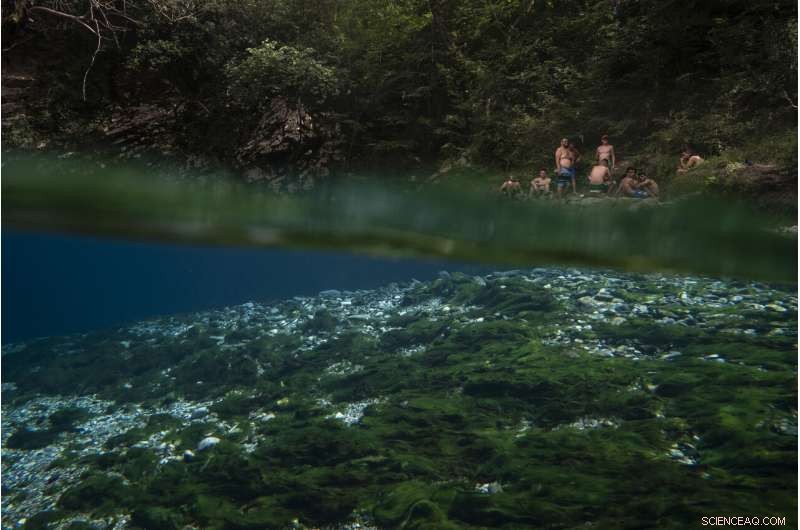
In this June 24, Foto 2019, residents sit on the shore of the Vjosa River next to a spring in the Kelcyre Gorge, Albania. Those who live along the riverbank or rely on the waterway for their livelihood fear dams could kill the Vjosa as they know it. Its fragile ecosystem will be irreversibly altered, and many residents will lose their land and homes. (AP Photo / Felipe Dana)
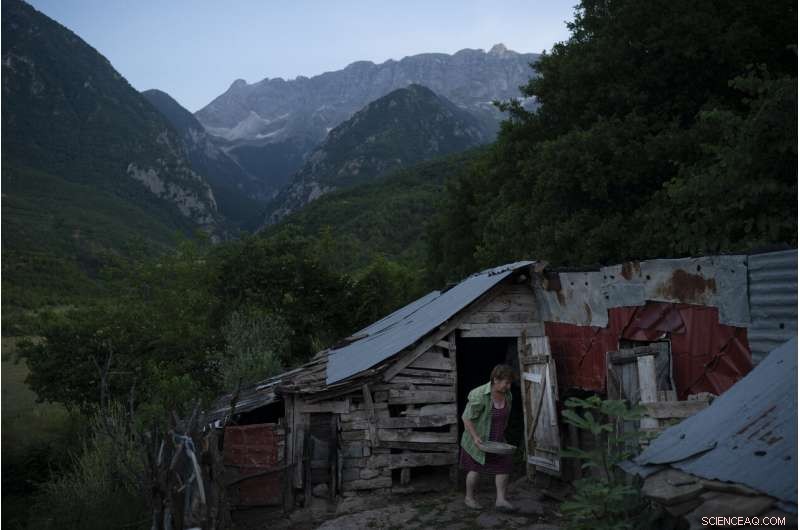
In this June 19, Foto 2019, Vito Ilia, 64, walks out of a small cow shed outside her home in the village of Kanikol, Albania. (AP Photo / Felipe Dana)
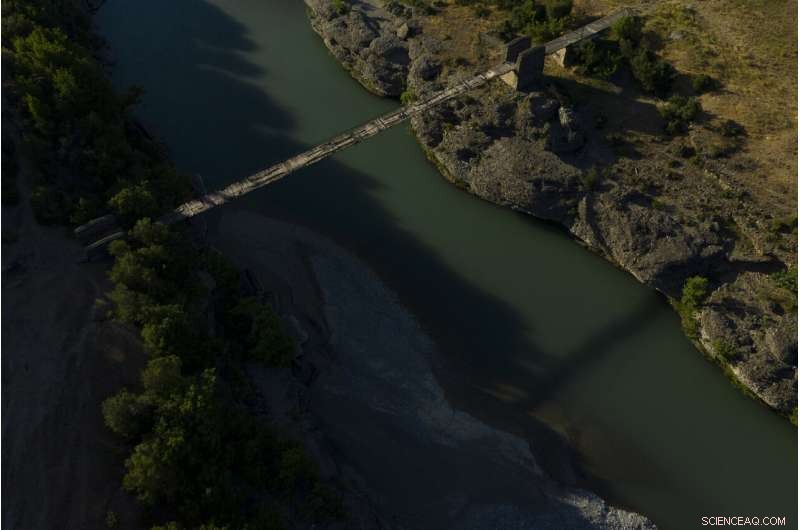
In this June 30, Foto 2019, an old bridge spans the Vjosa River near the border with Greece, in Albania. (AP Photo / Felipe Dana)
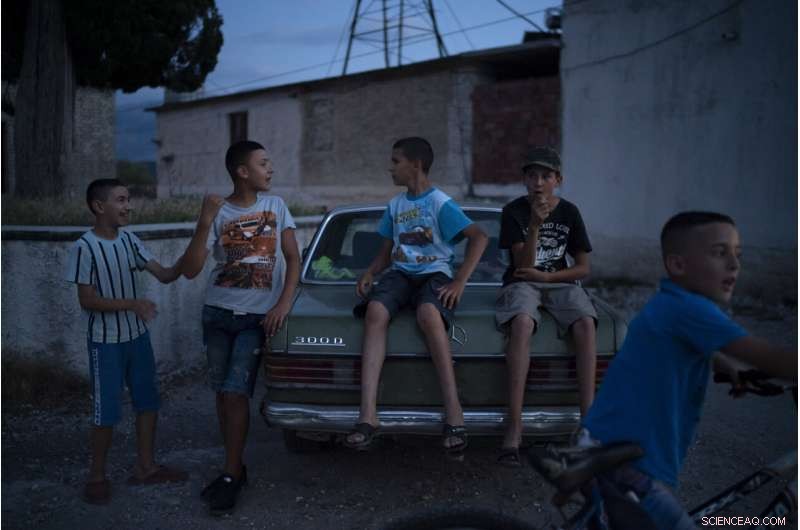
In this June 26, Foto 2019, children play outside at dusk in the village of Kute, Albania. The village overlooks the Vjosa River as it snakes its way north to the sea. Residents here joined a lawsuit against the Pocem dam that would flood their fields, some houses and, crucially for many, a cemetery. (AP Photo / Felipe Dana)
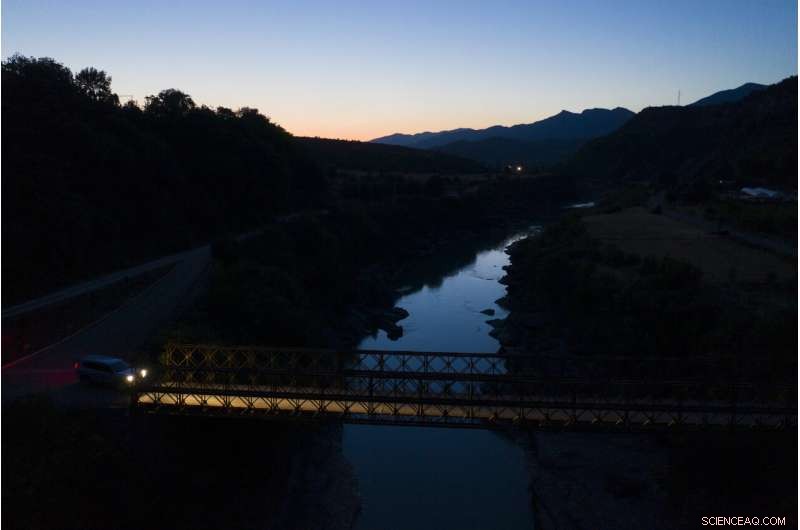
In this June 30, Foto 2019, the sky is reflected in the Vjosa River after sunset near the village of Badelonje, Albania. Rivers are a crucial part of the global water cycle. They act like nature's arteries, carrying energy and nutrients across vast landscapes, providing water for drinking, food production and industry. (AP Photo / Felipe Dana)
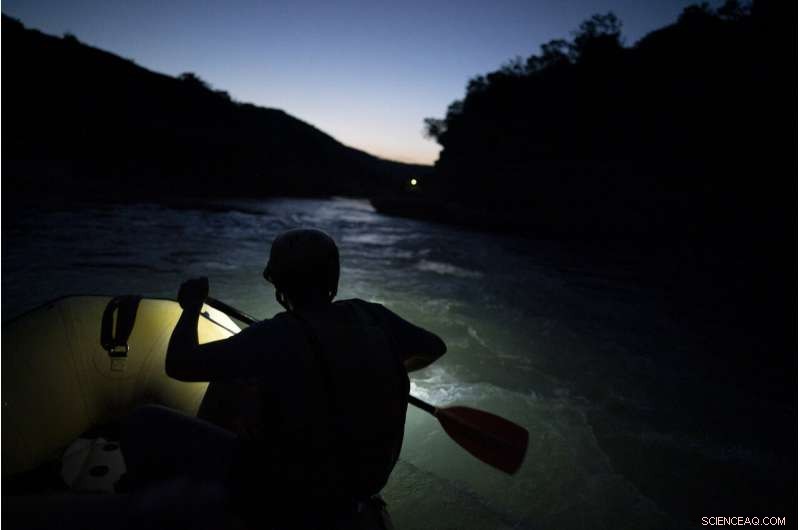
In this June 29, Foto 2019, a river rafting guide paddles at dusk on the Vjosa River, Albania. Those who live along the riverbank or rely on the waterway for their livelihood fear dams could kill the Vjosa as they know it. Its fragile ecosystem will be irreversibly altered, and many residents will lose their land and homes. (AP Photo / Felipe Dana)
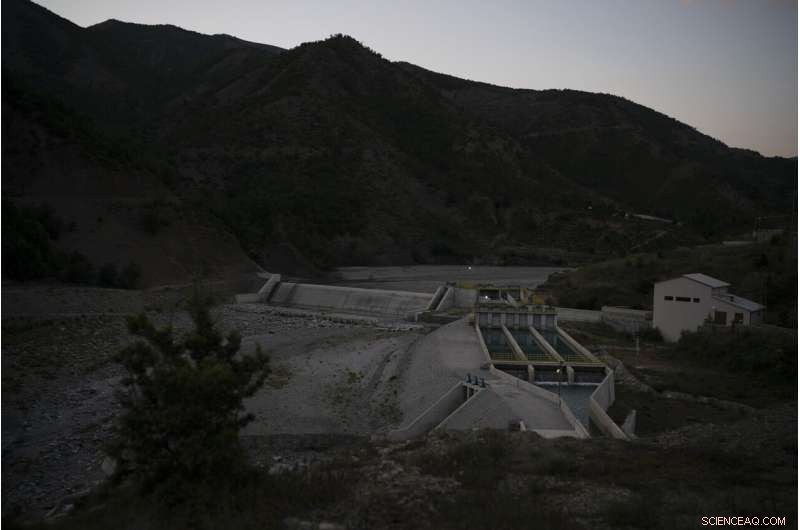
This June 20, 2019 photo shows the Langarica hydropower plant, on a tributary to the Vjosa River near Permet, Albania. As pressure to build dams intensifies in less developed countries, the opposite is happening in the U.S. and western Europe, where there's a movement to tear down dams considered obsolete and environmentally destructive. (AP Photo / Felipe Dana)
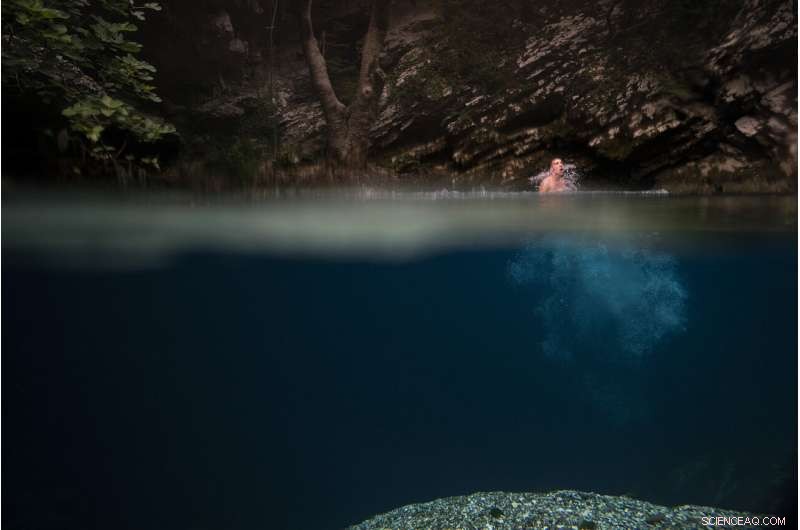
In this June 24, Foto 2019, a man jumps into a spring where it meets the Vjosa River in the Kelcyre Gorge, Albania. Albania's government has set in motion plans to dam the Vjosa and its tributaries to generate much-needed electricity for one of Europe's poorest countries, with the intent to build eight dams along the main river. (AP Photo / Felipe Dana)
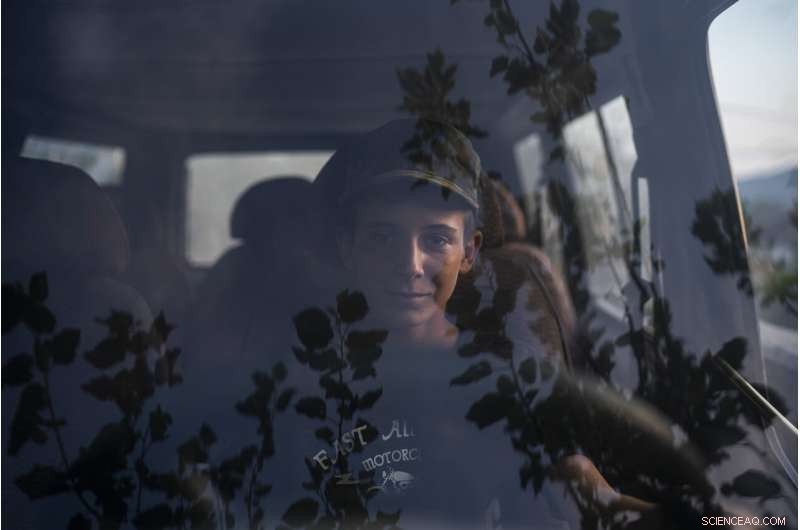
In this June 26, Foto 2019, 13-year-old Eriko, sits in the driver's seat of a car in the village of Kute, Albania. The village overlooks the Vjosa River as it snakes its way north to the sea. Residents here joined a lawsuit against the Pocem dam that would flood their fields, some houses and, crucially for many, a cemetery. (AP Photo / Felipe Dana)
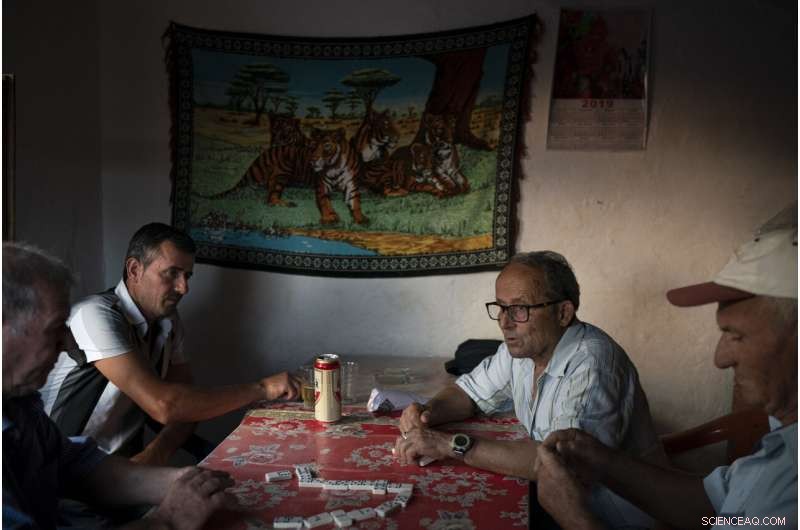
In this June 26, Foto 2019, residents play dominoes in a small bar in the village of Kute, Albania. Dozens of residents from the village joined nonprofit organizations to file what was Albania's first environmental lawsuit against the construction of a dam in the Pocem gorge. They won in 2017, but the government has appealed. (AP Photo / Felipe Dana)
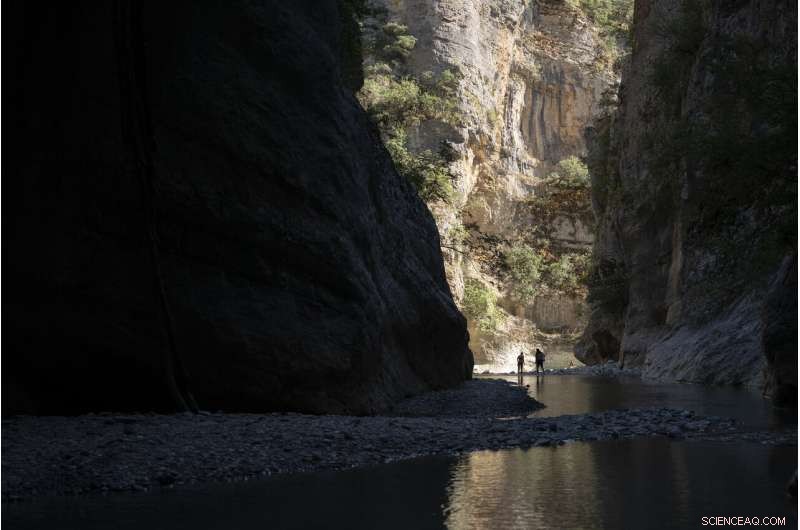
Neste dia 20 de junho, Foto 2019, people walk along the Langarica River, a tributary to the Vjosa near Permet, Albania. Albania's government has set in motion plans to dam the Vjosa and its tributaries to generate much-needed electricity for one of Europe's poorest countries, with the intent to build eight dams along the main river. (AP Photo / Felipe Dana)
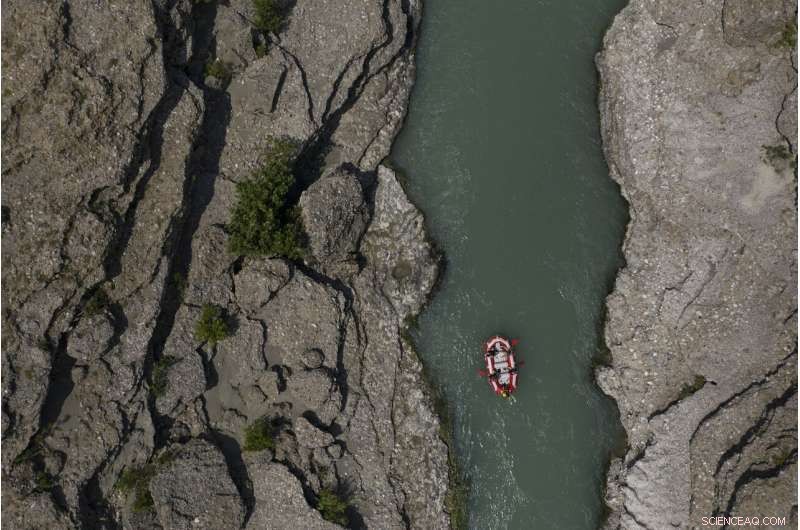
In this June 25, Foto 2019, people raft on the Vjosa River near Permet, Albania. Some tout hydropower as a reliable, cheap and renewable energy source that helps curb dependence on planet-warming fossil fuels like coal, oil and natural gas. But some critics like EcoAlbania say the benefits of hydropower are overstated—and outweighed by the harm dams can do. (AP Photo / Felipe Dana)
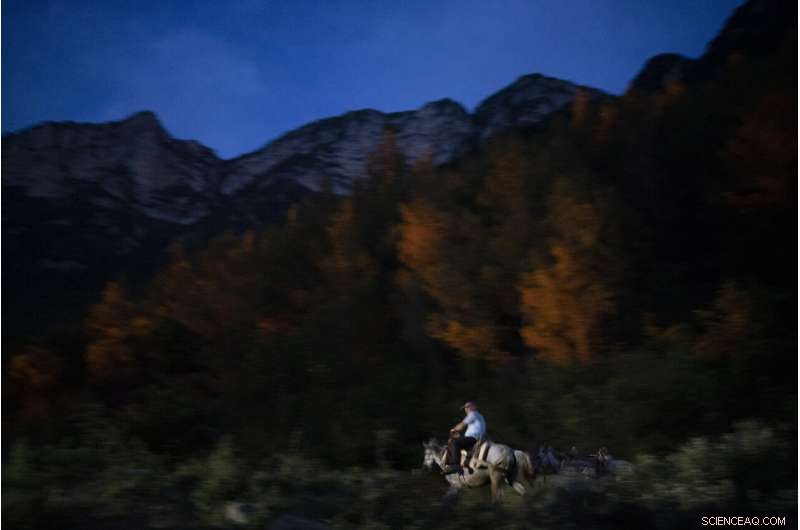
In this June 22, Foto 2019, Jonuz Jonuzi, 70, rides his horse on the banks of the Vjosa River in the Kelcyre Gorge, Albania. He raised his children here and now watches his grandchildren play in the Vjosa's waters. Before dawn each day, he crosses a bridge over a narrow gorge to tend to his goats before his son drives them to drink from a local spring, where the water emerges cold and crystal clear. "Everything I have, I have because of the river, " he says. "Albania needs electrical energy. But not by creating one thing and destroying another. Why do such damage that will be irreparable for life, that future generations will blame us for what we've done?" (AP Photo/Felipe Dana)
There are some signs in their favor. Em agosto, the government announced it was canceling a project in central Albania's Holta Canyon near the town of Gramsh, and would tear down part of a dam that's already built. The Infrastructure and Energy Ministry said in a statement the decision came after discussions with residents and an environmental review. Energy ministry officials rejected multiple interview requests to discuss the Vjosa River and the country's hydropower plans.
Could the Vjosa projects also be stopped?
Jonus Jonuzi, a 70-year-old farmer who grew up along the river, still has hope.
He raised his children here and now watches his grandchildren play in its waters. Before dawn each day, he crosses a bridge over a narrow gorge to tend to his goats before his son drives them to drink from a local spring, where the water emerges cold and crystal clear.
"Everything I have, I have because of the river, " he says. "Albania needs electrical energy. But not by creating one thing and destroying another. Why do such damage that will be irreparable for life, that future generations will blame us for what we've done?"
© 2019 Associated Press. Todos os direitos reservados.